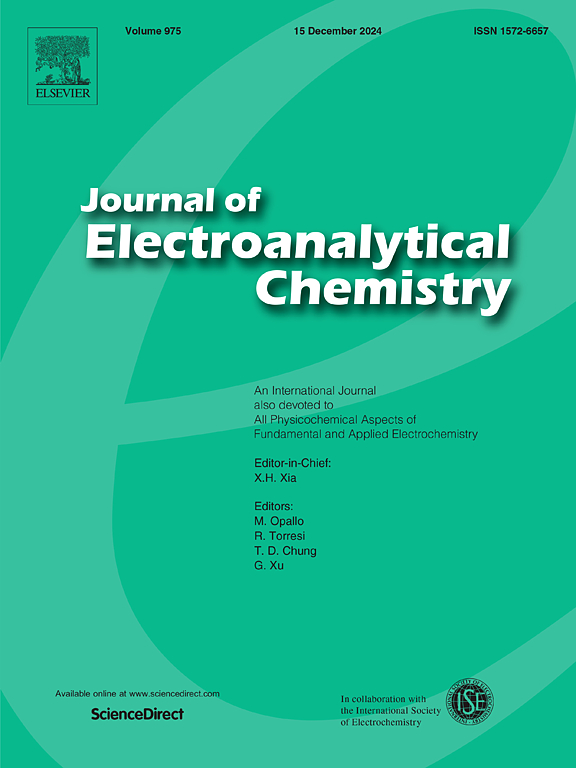CoF2-modified PEO-LLZTO composite polymer electrolyte to optimize Li+ transport pathway
IF 4.1
3区 化学
Q1 CHEMISTRY, ANALYTICAL
引用次数: 0
Abstract
Solid-state lithium metal batteries face challenges when utilizing polymer solid-state electrolytes based on poly(ethylene oxide) (PEO), primarily because these materials exhibit low ionic conductivity at room temperature. A common method of modifying polymer electrolytes is to add LLZTO inorganic powder to a PEO matrix to form a composite polymer electrolyte (CPEs). However, PEO-LLZTO CPEs still suffer from ionic conductivity as well as lithium dendrite penetration problems. Therefore, constructing an ideal artificial interfacial layer is crucial to solve the above problems. In this paper, a bilayer heterogeneous SEI layer enriched with LiF inorganic components and Li-Co lithophilic alloys is constituted by adding CoF2 commercial solid-state electrolyte additive to optimize the lithium homogeneous deposition behavior and accelerate the migration of lithium ions. The CoF2@CPEs prepared in the paper have an ionic conductivity of 5.10 × 10−4 S·cm−1, a Li+ ions migration of 0.32, and an electrochemical window of >4 V. In addition, the Li|CoF2@CPEs|Li symmetric cell can be stably cycled at a current density of 0.2 mA·cm−2 for 1200 h. And the LFP|CoF2@CPEs|Li cell formed by pairing with LiFePO4 (LFP) has good multiplication capability and cycling stability. The initial discharge specific capacity of the cell was 130.07 mAh·g−1 at 0.5C, with 78.81 % capacity retention and 99.15 % average Coulombic efficiency after 200 cycles.
求助全文
约1分钟内获得全文
求助全文
来源期刊
CiteScore
7.80
自引率
6.70%
发文量
912
审稿时长
2.4 months
期刊介绍:
The Journal of Electroanalytical Chemistry is the foremost international journal devoted to the interdisciplinary subject of electrochemistry in all its aspects, theoretical as well as applied.
Electrochemistry is a wide ranging area that is in a state of continuous evolution. Rather than compiling a long list of topics covered by the Journal, the editors would like to draw particular attention to the key issues of novelty, topicality and quality. Papers should present new and interesting electrochemical science in a way that is accessible to the reader. The presentation and discussion should be at a level that is consistent with the international status of the Journal. Reports describing the application of well-established techniques to problems that are essentially technical will not be accepted. Similarly, papers that report observations but fail to provide adequate interpretation will be rejected by the Editors. Papers dealing with technical electrochemistry should be submitted to other specialist journals unless the authors can show that their work provides substantially new insights into electrochemical processes.

 求助内容:
求助内容: 应助结果提醒方式:
应助结果提醒方式:


